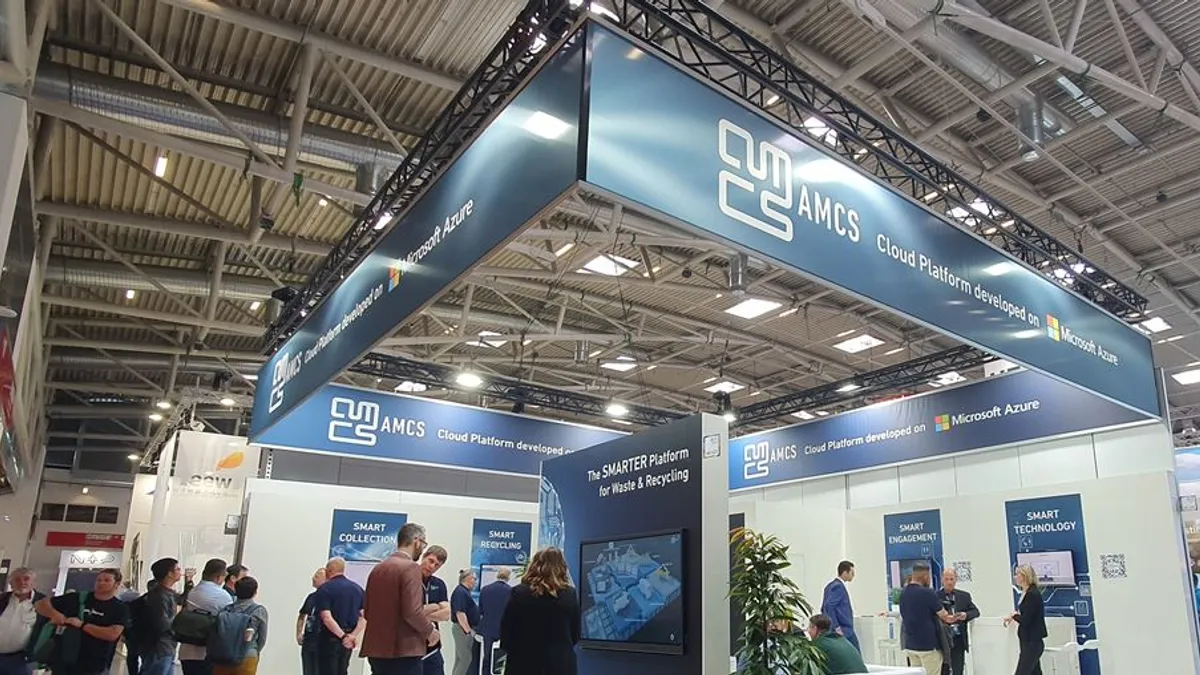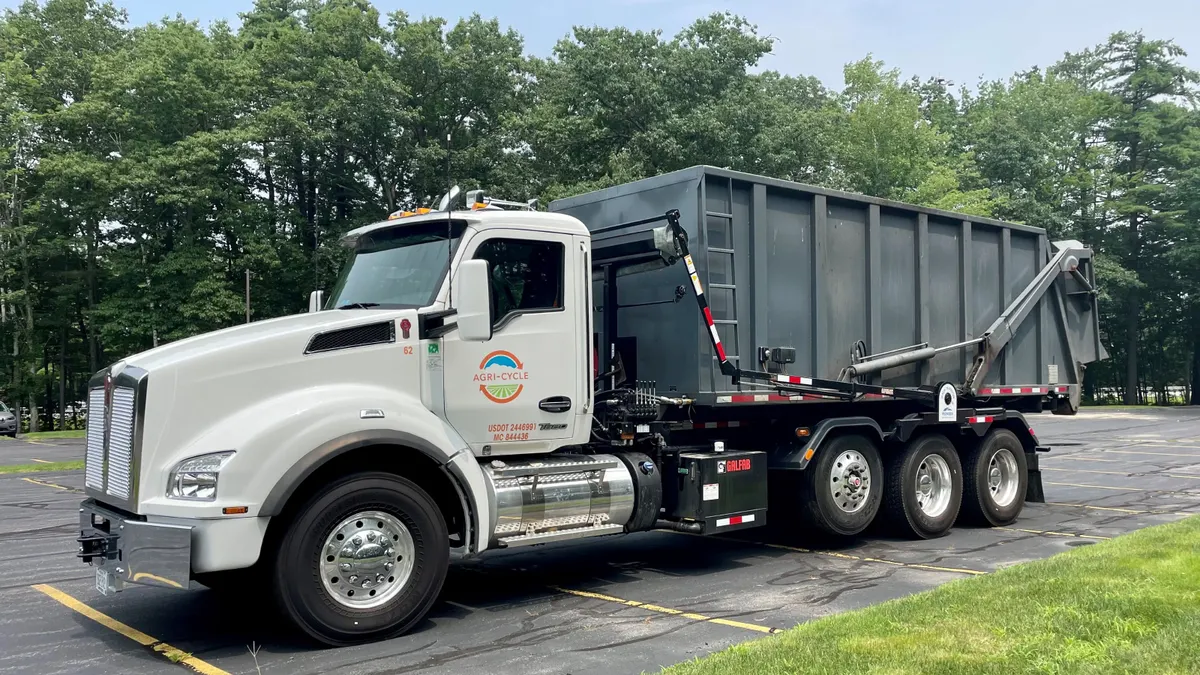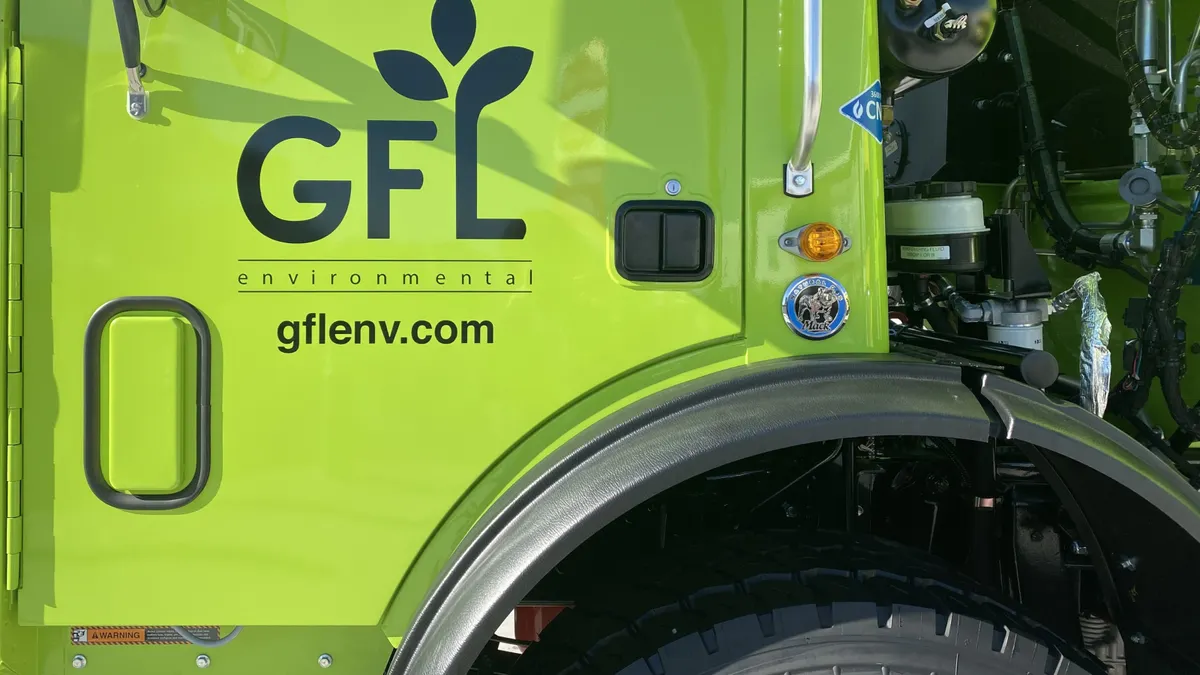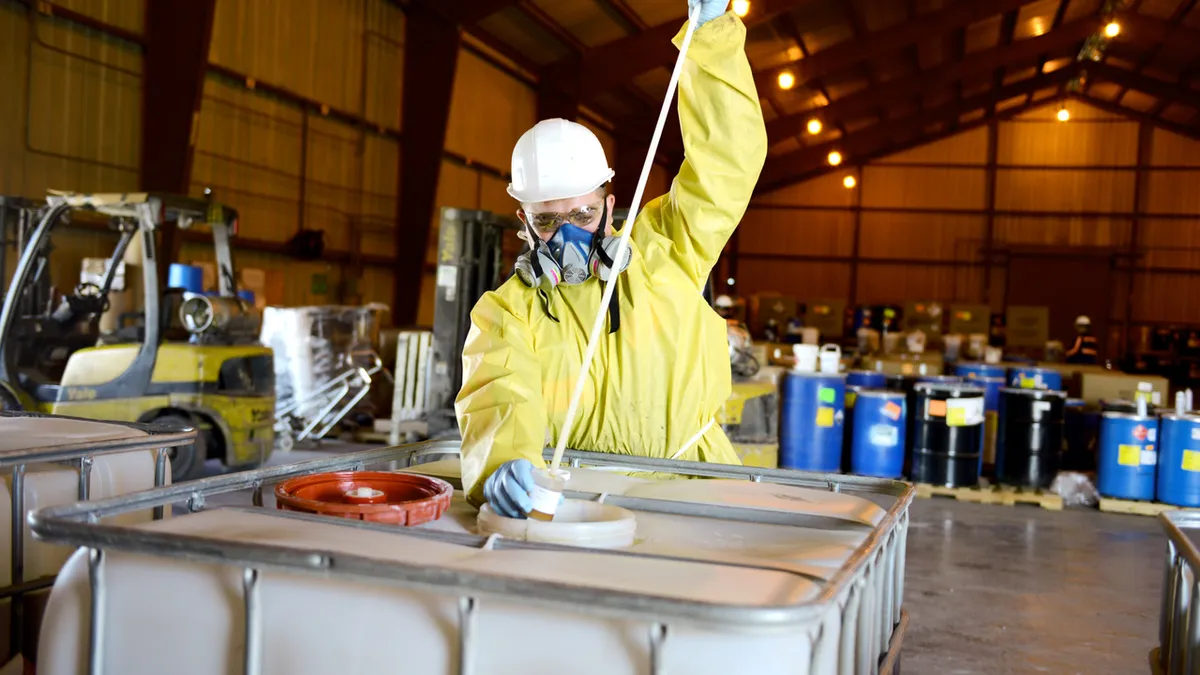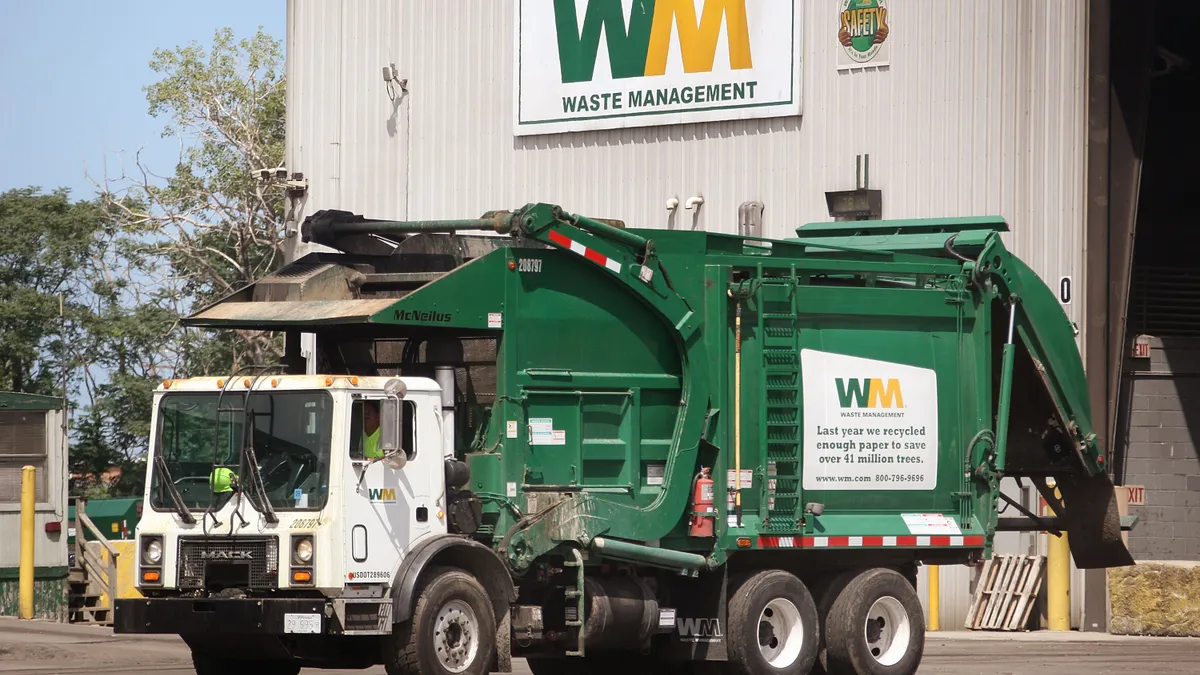Mergers and acquisitions notably reshape the hauler landscape. They also impact technology providers.
Michael Winton is president for North America at AMCS, a large Ireland-based cloud and software platform provider serving waste and recycling clients. Consolidation among haulers can mean extending the same software systems to acquired assets. And smaller companies that adopt technology may make for stronger buyout targets, Winton said in an interview with Waste Dive.
M&A has also been important within the tech sector. “The technology space probably mirrors the operator space with respect to M&A,” Winton said. “The most important kind of acquisition for us at this point is one where we're acquiring a complement to our solution footprint that helps extend the set of services and business benefits that we're providing to our existing customer base.”
Winton recounted well over a dozen acquisitions by AMCS during his tenure, including U.S.-based Dossier Systems, a deal announced last November that allowed AMCS to grow in fleet maintenance management.
Today, revenue skews about 60% from existing customers and 40% from new. Winton said that going forward the company will continue to explore how AI applications can further help with routing, pricing and other operational areas.
This interview has been edited for brevity and clarity.
WASTE DIVE: It’s increasingly common for different facets of waste businesses to be digitized. Do you all see much remaining ‘low-hanging fruit’ – US waste operations that could still adopt technologies that have been around for a little while now – or is AMCS more focused now on building out the scope of tools used by existing customers?
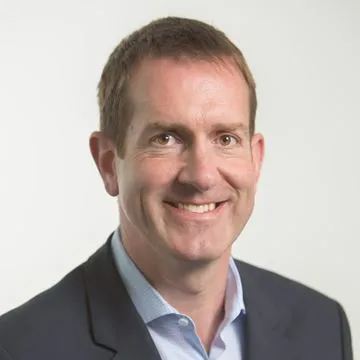
WINTON: When you think about mobile technologies or in-cab mobility — the mobile applications I think started to be introduced to the industry six, eight-plus years ago — we still find that there are operators with printed route sheets. So I do think that there's still a lot of low-hanging fruit.
Inside of the waste and recycling industry, relative to other industries (financial services, and certainly other consumer markets) ... still there are very few operators that are really conducting real commercial business transactions with their customers digitally. So I do think that there's still a lot of low-hanging fruit in the industry to be automated.
Among AMCS’s offerings, what’s providing the most growth right now in the North American waste and recycling market?
I don't think we see any one particular segment. We're engaged up and down the market as it might be segmented by size of operator.
We see a lot of traction inside of the Tier 1 market that is doing a lot of the acquiring inside the North American market. But similarly, [down market], there continues to be a lot of [spending] on technology as these operators are looking for ways to distinguish themselves inside of their regional market. And I think horizontally across our solution footprint, we do see this drive to engage customers digitally. That's a key theme, whether that's engaging customers digitally on the service of their existing customers — so reducing the cost of service — or moving to actually net new customer acquisition and driving revenue growth online. That's a big area of growth.
What we're seeing really prevalent [is the] emergence of the circular economy. So many waste operators are starting to view [waste streams as resource streams]. Publicly, WM, in both their rebranding and [their investment dollars] are driving toward operating as an energy producer. We have customers that are capturing landscape and yard waste inside of the waste stream, recycling it into compost and reselling it as consumer compost and fertilizer.
Similarly, manufacturing customers that are moving down into the recycling stream to capture feedstock into their manufacturing operations — so whether it's metals manufacturers that are moving down further into the capture and collection of scrap metal, or paper producers moving down further into the value chain to capture recycled fiber for feedstock into their mills — I think [this circular economy theme] is probably another key driver that we're seeing across the business.
You mentioned M&A in the industry. How does all that M&A that's going on affect AMCS’s footprint?
I think it affects the entire market pretty significantly.
I’ve been at AMCS running our North America business for six years. One of the things that M&A has done is it's brought more professional money into the industry, and with each successive year there's more professional money in the industry – so more private equity investors and more professional investors. And I think what that drives is more professional management and more of a focus on professionally-run businesses and for us it often leads to an investment in technology. So we see M&A activity and the influx of professional investors to be really healthy for us as a technology partner into the market.
How do you all view partnerships with other tech providers? Are there things that AMCS can do when there are other vendors involved with a hauler to potentially harmonize technologies or improve the overall experience?
We absolutely see the opportunity to partner. If you think about where we sit, we sit as a central hub and across the core operations of most of our customers. At the core of those critical operations, we're helping our customers make the best use of data.
[As a software company], we’ve invested very heavily in having an open architecture. Three-plus years ago, we thought it was going to be really important for us to be more open and easy to integrate with other technologies. And so one of the innovations that we've introduced this year is a solution called Vision AI, which is leveraging artificial intelligence to help our customers identify contamination in the waste stream and recycling stream as it's going [into a truck].
There's two key actors in that solution: one is the device captures the image, whether it's a still picture or video, and two is the sophisticated software that's interpreting the image. So we partner with a variety of device vendors that are capturing the image. We saw that as something that we need to be open to, that a number of our customers have standardized on their trucks across their operations with different vendors. And so the collection of that data in that regard was not something that we were going to be focused on. We were going to stay focused on the use of maximizing the value of the data that those devices were capturing.



